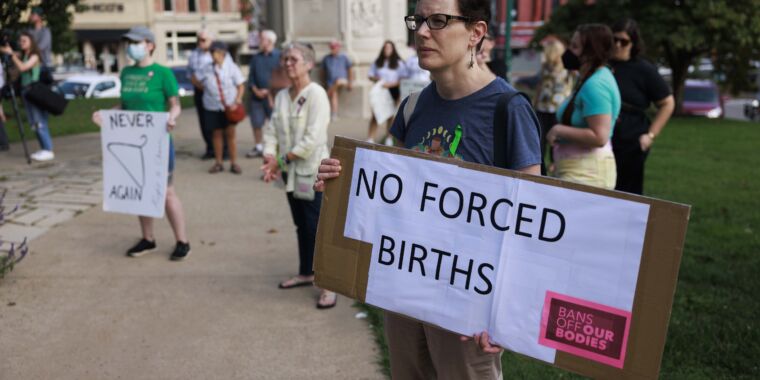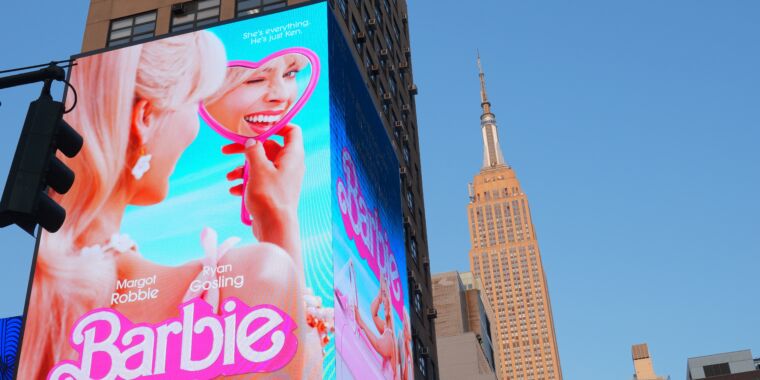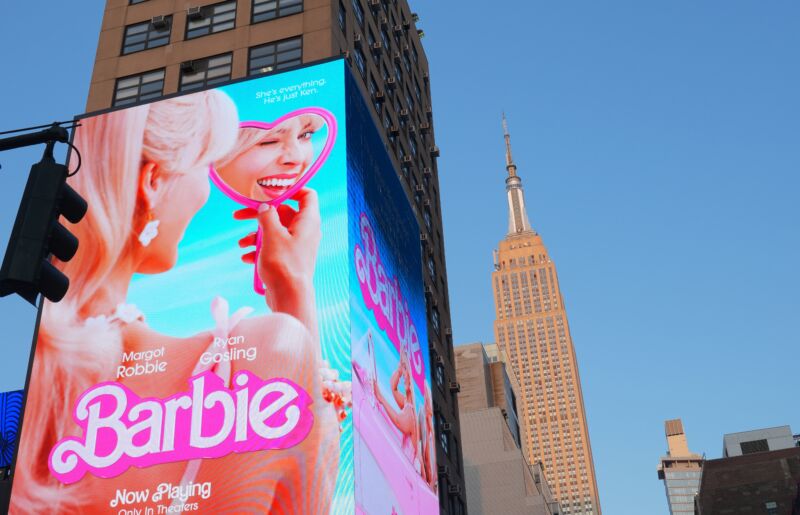In abortion ban states, sterilization spiked after Dobbs and kept climbing
Can’t blame ’em —
Sterilizations spike with abortion bans and declining access to care and contraception.

Enlarge / A woman holds a placard saying “No Forced Births” as abortion rights activists gather at the Monroe County Courthouse for a protest vigil a few hours before Indianas near total abortion ban goes into effect on September 15, 2022.
The more abortion access is jeopardized, the more women turn to sterilization, according to a new report in JAMA that drew on health insurance claims of nearly 4.8 million women in the US.
In states that enacted total or near-total abortion bans following the US Supreme Court’s Dobbs decision in June 2022, the rate of sterilizations among reproductive-age women that July spiked 19 percent. A similar initial spike was seen across the nation, with states that either limited or protected access to abortions seeing a 17 percent increase.
But, after that, states with bans saw a divergent trend. The states that limited or protected abortion access saw sterilization procedures largely level off after July 2022. In contrast, states with bans continued to see increases. From July 2022 to December 2022, use of sterilization procedures increased by 3 percent each month.
The study adds to previous data finding that overturning Roe v. Wade and limiting legal access to abortion spurred reproductive-age people to seek permanent contraception. A study published in JAMA Health Forum in April, for instance, found an abrupt increase in tubal ligation and vasectomies in people aged 18 to 30 shortly after the Dobbs decision. The current study furthers the finding by assessing trends of sterilization procedures in the context of state abortion laws and policies.
The surge in sterilization is just one of the many ways reproductive healthcare in the US has been rocked or upended by the Supreme Court’s 2022 decision. In June, a study in JAMA Network Open found that states with the most restrictive abortion policies saw declines in prescriptions filled for birth control pills and emergency contraception. The finding suggests that the abortion bans and limitations have disrupted and created barriers to contraception access in restrictive states.
On Tuesday, meanwhile, the March of Dimes released a report painting a bleak picture for Americans who become pregnant. The analysis found that over half of US counties do not have a hospital that provides obstetric care. In the last two years, 1 in 25 obstetric units shut down. Further, 35 percent of counties in the US are considered maternity deserts, meaning that 1,104 counties in the US do not have a birthing facility or even a single obstetric clinician. Living in a maternity desert is associated with receiving less prenatal care and higher rates of preterm birth. Those 1,104 counties are home to 2.3 million women of reproductive age who gave birth to over 150,000 babies in 2022.
The US continues to have the highest rate of maternal deaths among any high-income country, with Black women seeing the highest death rates, according to the latest report from the Commonwealth Fund.
In abortion ban states, sterilization spiked after Dobbs and kept climbing Read More »


